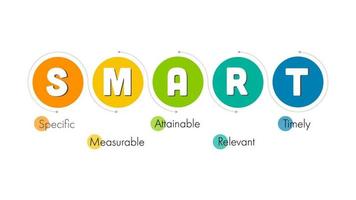Sketching Realities: The Essence of Visual Art
Art has this magical ability to transport us to different worlds, allowing us to perceive realities beyond the tangible. In the vast spectrum of visual arts, one form stands out for its simplicity and yet profound impact: drawing. It’s more than just putting pencil to paper; it’s an exploration of realities, a journey through lines that speak volumes.
Lines Unleashed: Mastering the Art of Drawing
Drawing isn’t just about creating images; it’s about unleashing lines that carry emotions, stories, and perspectives. It’s the mastery of these lines that sets the foundation for a compelling visual narrative. From the delicate strokes of a charcoal sketch to the precision of ink on paper, every line has a purpose, every stroke has a story to tell.
Beyond Pencils: Exploring Diverse Drawing Mediums
While pencils are the classic tool of a draftsman, the world of drawing extends far beyond graphite. Artists today explore a plethora of mediums, from vibrant pastels to digital tablets. Each medium brings its own texture, color palette, and unique challenges, allowing artists to broaden their horizons and push the boundaries of traditional drawing.
Drawing Mastery: Techniques for Every Artist
Mastering the art of drawing involves honing a set of techniques that go beyond basic sketching. It’s about understanding proportions, shading, and the play of light and shadow. Whether it’s the meticulous cross-hatching of a pen-and-ink drawing or the fluid strokes of a digital brush, drawing mastery is a continuous journey of skill refinement.
Capturing Moments: The Power of Visual Storytelling
Drawing isn’t merely about replicating what we see; it’s a form of visual storytelling. Artists have the incredible ability to capture fleeting moments and emotions on paper, freezing them in time. A single drawing can convey a narrative, evoke emotions, or even transport the viewer to a different era. It’s a testament to the storytelling power inherent in every stroke.
From Pencil to Pixel: Drawing in the Digital Age
As technology advances, so does the landscape of drawing. The digital age has ushered in a new era where artists can seamlessly transition from traditional mediums to digital platforms. Tablets and styluses become modern-day sketchpads and pencils, offering a whole new realm of possibilities and a bridge between the traditional and the contemporary.
Expressive Lines: Drawing Emotion in Art
Lines on a canvas are not just marks; they are conduits of emotion. The way an artist uses lines – whether bold and dynamic or soft and subtle – speaks volumes about the mood and intent behind the artwork. Drawing becomes a language, a silent conversation between the artist and the viewer, where emotions flow freely through the strokes.
Illuminating Perspectives: The Artistry of Drawing
Drawing is a form of visual philosophy, where artists illuminate perspectives that might otherwise remain unnoticed. It’s about seeing the world through a unique lens and translating that vision onto paper. Whether it’s the meticulous observation of details or the distortion of reality for artistic impact, drawing allows artists to share their distinct perspectives.
Sketchbook Chronicles: Journeys in Visual Expression
A sketchbook is more than a collection of drawings; it’s a personal chronicle of an artist’s journey. It’s a space for experimentation, where ideas are born, mistakes are embraced, and artistic evolution unfolds. The pages of a sketchbook document the highs and lows, the breakthroughs and struggles, creating a tangible record of an artist’s growth.
Contours of Creativity: Drawing Beyond Boundaries
Drawing defies boundaries; it’s not confined to a particular style or subject matter. From abstract forms to realistic portraiture, the possibilities are endless. Artists push the contours of creativity, constantly challenging themselves to explore new themes, experiment with unconventional techniques, and redefine the limits of what drawing can achieve.
Fine Art Drawing: Precision in Every Line
Fine art drawing is a discipline that demands precision and meticulous attention to detail. It’s about achieving a level of refinement where every line serves a purpose and contributes to the overall composition. Whether it’s the detailed cross-section of an architectural drawing or the subtle nuances in a portrait, precision is the hallmark of fine art drawing.
Digital Dimensions: Drawing in the Modern Era
In the digital realm, drawing takes on new dimensions. Artists harness the power of technology to create intricate digital drawings that push the boundaries of what is achievable on paper. Digital tools offer unprecedented flexibility, enabling artists to experiment with colors, textures, and effects that were once unimaginable in the traditional drawing process.
Masterful Strokes: The Artistry of Drawing Techniques
Behind every masterful drawing are carefully chosen techniques that enhance the artistic impact. Techniques such as stippling, sgraffito, and chiaroscuro add layers of complexity to a drawing, elevating it from a mere illustration to a work of art. Each stroke is a deliberate choice, a calculated move to achieve a desired visual effect.
Harmony in Lines: Drawing Visual Symphonies
Just as musical notes come together to form a symphony, lines in a drawing harmonize to create visual masterpieces. The arrangement of lines, the interplay of shapes, and the balance of negative space all contribute to the harmony of a drawing. It’s a delicate dance where each line plays a crucial role in the overall composition.
Layers of Meaning: Drawing in Creative Depth
Drawing is not a superficial art form; it operates in layers, both literally and metaphorically. Artists build layers of meaning through composition, symbolism, and texture. Whether it’s a multi-layered narrative in a conceptual drawing or the physical layering of mixed media, depth adds richness and complexity to the viewer’s experience.
Penciled Realism: Lifelike Drawing Secrets Revealed
Achieving realism in drawing requires a keen eye for observation and an understanding of the nuances of light and shadow. Artists adept in the art of lifelike drawing bring scenes to life, making the two-dimensional paper almost transcend its flatness. It’s a skill that requires patience, practice, and an unwavering commitment to capturing the essence of reality.
Beyond the Sketch: Drawing Dialogues in Art
Drawing is not confined to the solitude of an artist’s studio; it’s a form of dialogue. It’s a conversation between artists, across cultures, and throughout history. Each drawing becomes a contribution to a larger discourse, a visual language that transcends spoken words. The dialogue extends to the viewer, inviting them to interpret and engage with the artwork.
Whispers of Lines: Conversations in Drawing
Lines, like whispers, carry subtle messages. In the quietude of a drawing, lines speak volumes. They convey emotions, tell stories, and invite contemplation. It’s in these whispers of lines that the true essence of drawing is found – in the gentle conversation between the artist, the artwork, and the observer.
Visual Insights: Unveiling the Art of Drawing
Drawing provides a unique lens through which we can gain visual insights into the world. Whether it’s the portrayal of social issues, the celebration of beauty, or the exploration of the human psyche, artists use drawing as a powerful tool to convey messages, share insights, and invite reflection. It’s a visual language that transcends cultural and linguistic barriers.
Brush and Pencil: Drawing in Mixed Media
The boundaries between drawing and other art forms blur in the realm of mixed media. Artists seamlessly integrate drawing with painting, collage, and various materials, creating dynamic and textured artworks Read more about drawing in visual arts






